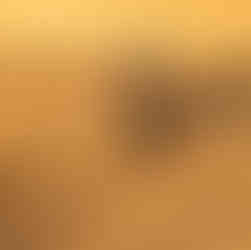Outback Journey
- Lauretta Stace
- Apr 17, 2023
- 4 min read
South Australia has a lot to offer the avid traveller, including access to some beautiful, desert-landscape scenery, iconic tracks to the 'never-never', abundant wildlife sightings and interesting outback towns. After crossing the Nullarbor into South Australia, we decided to journey into the heart of the outback by heading north along the Outback Highway to the junction of the iconic Birdsville and Oodnadatta tracks at the base of Lake Eyre. We then turned south to spend some time in the spectacular Flinders Ranges.

The Outback Highway
Nothing gives you a better sense of the vastness and raw beauty of this land than travelling along the highway towards the arid centre of Australia. Our goal was to reach the township of Marree, at the southern end of Lake Eyre to check out the starting point of the Birdsville and Oodnadatta tracks. We decided not to take a flight over Lake Eyre as it was very dry and not expecting any water to seep down from Queensland until many weeks into the future. Oh well...another trip for another day!
On the way we stayed in a wonderful campsite that is part of the Merna Mora sheep station, just west of the Flinders Ranges, where we were able to gaze at the multitude of stars in the clear night sky and practice some astrophotography. We also visited the ruins of an old, abandoned township called Farina which stands as an example of the challenges faced by early European settlers to farm this land. On our way south, we stopped by the town of Parachilna and had lunch at the iconic Prairie Hotel. The Hotel has been lovingly restored on the exterior but boasts a very chic and modern interior with beautiful works of art adorning the walls and a splendid menu. It's well worth checking out. Altogether - a great outback experience!
The Fabulous Flinders Ranges
Words cannot describe how spectacular the Flinders Ranges really are. But here we are in a landscape with dramatic, towering rock faces, ancient mountain ranges, spectacular gorges and sheltered creeks, all clothed in the rich colours of the earth - red, orange, ochre, brown and yellow. To top it off, the Flinders Ranges is home to Wilpena Pound - an amazingly large natural amphitheatre, created through erosion over millions of years. Our journey through the ranges started at Rawnsley Park Station on the southern side of Wilpena Pound. So stunning and awe-inspiring!
Rawnsley Park Station
This modern-day sheep and cattle station has created a wonderful place for travellers to explore the Flinders Ranges and experience all it has to offer. Our time was spent walking through the many rugged mountain trails that surround the property, spotting wildlife and enjoying a flight over Wilpena Pound and the spectacular Flinders Ranges. We were very excited to spot and photograph a male and female red-capped robin as well as several birds of prey, kangaroos and emus. Dinner at the onsite Woolshed Restaurant was fabulous.
Check out the aerial view of Wilpena Pound and the Flinders Ranges
Our 45 minute flight took us over the top of Wilpena Pound, Rawnsley Bluff, the Elder, Chace and Heysen Ranges and the spectacular Brachina and Parachilna Gorges in the north of the ranges.
Wilpena Pound
Our next stop was to journey into the heart of the Flinders Ranges National Park to camp at Wilpena Pound Resort at the northern base of the Pound. This resort also has excellent experiences, resources and infrastructure for the traveller. It's a bushwalkers paradise, with lots of interesting trails that follow the natural creek bed and branch outwards and upwards into various part of the rugged cliffs and mountain ranges. Wilpena Pound is a geological wonderland and an important meeting place for the local indigenous people. One of the walks that we did enables you to enter the Pound itself through a narrow rock opening and gaze out over the magnificent natural amphitheatre of the Pound in all its glory. Due to some recent light rain, the creeks had some water in them and vegetation and wildlife was abundant.
Take a look at Wilpena Pound from ground level:
Brachina Gorge
One of the highlights of the journey was a drive through the magnificent Brachina and Bunyeroo Gorges in the heart of the Flinders Ranges National Park.
Yellow Footed Rock Wallabies
Of special note was a spotting of several rare and beautiful yellow-footed rock wallabies at the base of the gorge. Note the long, striped tail, coloured markings and padded feet on this gorgeous native marsupial.
Dingley Dell Campground
Our final stop in the Flinders Ranges was at a national park managed bush camp called Dingley Dell, just near the turn-off to the Brachina Gorge. Here we were able to gaze at the vast night sky, light a camp-fire, have numerous wildlife encounters and do some lovely local walks and drives through the National Park. Thankfully, wedgetailed eagles are quite common in this region. We were fortunate to spot and observe a pair that had recently killed a feral baby goat for lunch.
Ancient Aboriginal Rock Art
The Flinders Ranges have a rich Aboriginal heritage and are home to a number of significant cultural sites and ancient artworks. We visited Arkaroo Rock, just south of Wilpena Pound which has a number of important charcoal and ochre paintings. Combined with the spectacular scenery, this was a great way to end our journey in this magnificent region of Australia.


















































































































































































Comments